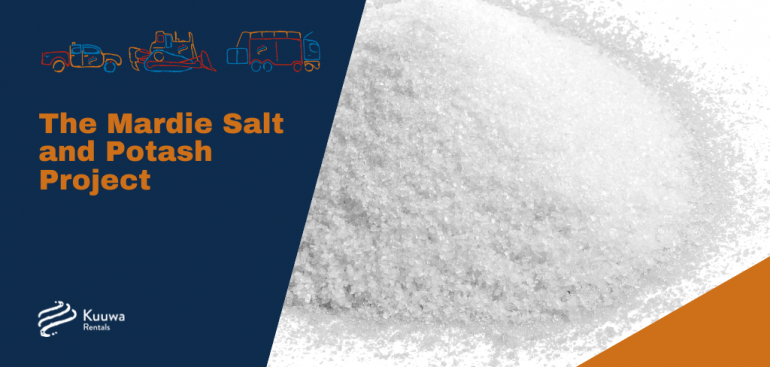For most of us, we don’t think much about salt beyond when we reach for it at the dinner table. But a new project in the Pilbara is showing that salt is really, well, worth its salt.
While mineral commodities, particularly iron ore, still dominate WA’s resource sector, anyone who has flown into Karratha airport or driven along the Dampier Highway would know that salt has its own footprint in the region. For good reason too – the Pilbara has the perfect climate of high temperatures, high wind, low rainfall and low humidity for producing high purity salt.
Around 100km south west, between Karratha and Onslow, around 4.4 million tonnes of the world’s oldest and most used food seasoning sits on the coast.
BCI Minerals’ Mardie Salt and Potash project is on track to be the world’s third largest solar salt project. As the world’s population grows, increasing the need for more products where salt is an ingredient, global demand is anticipated to be over 50 million tonnes per annum in the next decade. And with demand close by in Asia growing by 30 per cent, its not hard to see why the likes of Ryan Stokes has sold iron ore assets to focus on the Mardie project.
Alongside salt, the project is anticipated to produce around 120,000 tonnes of sulphate of potash (SOP) every year, for around 60 years. SOP is used to fertilise high-value crops, and there isn’t any SOP production in Australia yet, with all other development projects in the pipeline more than 800km away from ports.
The Mardie project, last year granted Major Project status by the Federal Government, is a boom for the local economy.
There’s a focus on local engagement and procurement, with Aboriginal and Pilbara businesses to be prioritised. Local Aboriginal communities will benefit from native title land access agreements in place worth more than $150 million.
New infrastructure will be built, like major roads and an accommodation village for over 400 people. Most notably, a new transhipment port with a 2.3km jetty will be built and made available to others, opening up the opportunity for exports from other local projects and commodities.
Over 500 construction jobs and 200 ongoing jobs will be created, as well as indirect jobs, and the project is expected to bring in more than $600 million to the State economy through royalties.
Overall, a fantastic project for the region. Who knew salt could have such an impact?
Actually, salt is used to create more than 10,000 different products, many of which we use in our every day lives. There’s glass, aluminium, paper, rubber, textiles, soap, pottery….the list goes on and on. Only around six per cent of the world’s salt is used in food!
But back to the Mardie project – operations are expected to start in 2022 with the first salt on the ship by 2024. It will be heading to Asia – 13 non-binding MOUs signed already – where the market for salt is valued at US$6.5billion annually.
Undoubtedly a great project for the Pilbara.

